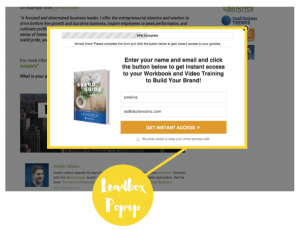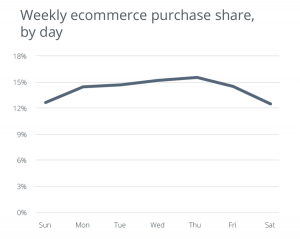When you’re thinking of guest blogging for another website, you have a lot to consider, especially if this is a new concept for you. Do you know all the benefits of guest blogging? Do you know what you hope to accomplish as a result of getting published?

The Benefits
Guest blogging can benefit you whether you’re a business or a person, and these are just some of the ways:
- Build your thought leadership
- Get more traffic to your website
- Build your email list for further communications
When you have a guest article published, you’ll see the benefits almost instantly. The hosting site will share your content, and their following will do the same. This will significantly increase your content reach as well as get your name in front of a larger audience than your blog allows.
Thought Leadership
Your thought leadership will grow with every guest article, which is key. Businesses need to show thought leadership for bringing in customers who trust them. Individuals need thought leadership to bring in clients and career opportunities.
Website Traffic
Another important benefit of guest blogging involves an increase in your website traffic. When people read your article, they may want to know more. You may have mentioned an additional resource that corresponds with the article’s topic, or your bio convinces them to stop by on your site. This is a goal you want to achieve with guest blogging because it’ll help you get people interested in what you have to offer.
Email List Building
Although you do have to be careful with how you approach this, you can use guest blogging as a way to build your own email list. Most websites accepting guest articles have rules for how you approach your own lead generation. Sometimes, they restrict how many links you include in your content. Sometimes, they don’t allow any self-promotion or CTAs leading to your site. Your best bet is to only take measures that work for both parties involved: you and the host site.
Goal Setting
Before you get started with the guest blogging process, know what you hope to accomplish. You need to have a strategy with clearly-defined goals. When, and only when, you know what results you’re seeking, you can start the process of getting your content on other sites.
— — — — —
The Guest Blogging Process
Now that you know what your goals are for guest blogging, it’s time to get started with the different steps of the process. Always keep in mind what you want to get out of this with every action you take.
Before You Begin, A Brief Checklist…
- You should have a strong social media presence
- You should have your own blog to demonstrate thought leadership
- The person pitching the idea should always be the writer of the article
- Create a strategy that’ll help you stay organized and on-track with your mission and goals

1) Initial research stage
You’re ready to get started with the guest blogging process, so it’s time for the initial research stage. What does this entail?
Do a Google Search to start with. Use keywords that include your target industry and relevant words such as “guest posts” or “guest articles.” When you see search results, focus away from the advertisements and more on the organic options.
If you know of sites you want to contribute to, create a list of them for the next stage. You’re not yet ready to dive into those. This stage is for your overall research of new sites you might not already know about.
If you’re more interested in a one-stop place for marketing-based blogs accepting guest contributions, you can view a thorough list of the top sites here.
2) Per-site research stage
With each blog you have on your list from stage one, you have specific steps to follow before making a pitch. If you want to be successful with your guest blogging activity, you should do each of the following tasks:
- Find the blog’s guest contributor guidelines. The site should almost always have a page dedicated to telling you what they’re looking for and the rules they have for their blog content. If and only if you can follow these guidelines should you proceed to the next step.
- Use Google’s site search capabilities to find a topic that hasn’t been covered in the blog before. Or, find a topic that you can expand upon, update, or improve. Sometimes, if a preexisting topic is from long ago, you may be able to pitch it again if you can take a new approach to it and make it more relevant for today’s audience.
- Look at the site’s most popular articles to see what topic categories are appealing to the largest audience. If an article about email marketing is a huge hit, find a topic within that category that could have the same appeal without duplicating the content.
These steps above will help you find topic possibilities to work with and pitch to the site editor. But it’s not time to pitch just yet. There’s still more to do first.
3) Relationship-building stage
Many writers are pitching their ideas to editors every day. Editors have a long list of possible content ideas to review, so if you want to get published, you need to appear higher up on that list. Guest blogging is all about reaching the site editors at the right time with the right pitch, but if you really want to get the best results, start by building relationships with editors in advance of your pitch.
Emails
You have several options for how to start this relationship-building. Many times, you can introduce yourself via a selfless, simple email. This is an email that focuses the attention on the editor, not yourself. Mention one of their site’s articles and how it appealed or helped you. Talk about them and the site they manage in a brief email note.
Even though the email should primarily focus on the editor, you still need to introduce yourself in some way. This can be a strategically-designed email signature. It can be a short description at the beginning of the email. Ideally, you’ll want the introduction to relate well with the other site.
Social media
Another way to build a relationship with editors and the site as a whole is to use social media. Share their content from your own account, always making sure you properly tag the site for credit. If there’s room, tag the content author as well for even more reach.
Social media is a great way to build a relationship because you can participate in real-time conversations with the site accounts and sometimes even the editors themselves. When you want to make a true connection, find the editor’s own social media accounts, and contact them directly. To do this appropriately, use this as an opportunity to ask questions or show appreciation. It’s not a good place to pitch your guest blogging ideas.
Blog comments
Lastly, you can really make a good impression with editors if you show your interest in their content directly. This means commenting on the articles themselves on-site. If you do this correctly, it’ll show you’ve read their work and applied it to your own efforts. Alternatively, it’ll show you have your own expertise if you’re able to answer their concluding questions with valuable contributions.
Commenting on blog articles leaves a very good impression as long as you use this as an opportunity to contribute value, not pitch yourself and your own ideas. It’s a time for helping other readers and showing thanks to the author. In some cases, you may be able to include a link to your own content but only if the site allows links and only if the link is relevant and helpful.
Put the focus on the editor and site’s content, making your own needs secondary. You’ll build better relationships and have a higher chance of getting your pitches accepted.
4) Content creation stage
Most guest blogging sites request or even require a full draft of your article when you’re submitting a pitch. That’s why the creation stage comes before your pitch.
The draft
It’s important that you spend a good amount of time creating an article that utilizes the heavy research you’ve already done. Create a draft that follows the tone and structure of the other articles on their site. If you really want to impress, include at least one internal link in your draft to show you’ve done your research.
Your bio
If you want to see a healthy flow of traffic on your own website as a result of your guest contribution, you need to create a convincing, actionable bio. Always add a call-to-action that will lead people to something of additional value to them. Ideally, it should be relevant to your article’s topic and content.
Your landing page
Your bio’s call-to-action should always lead to a custom landing page that hopefully corresponds with the content in your article. This landing page should have a form for visitors to fill out so that you can earn your own leads from your guest blogging. Filling out the form should lead to an offer that will help your visitors. It should be more of value to them than yourself. That’s how you earn true, loyal leads.
When you have an article draft with a bio and landing page ready, you can proceed to pitching it to another site. Always remember that your draft should be custom-made for one site at a time. You should always create a new draft for each site you’re pitching to in order to fit with the site’s tone and structure.
5) Pitching stage
You’ll probably notice that many sites accepting guest posts have an online form you can fill out as your pitch. This is an organized way of handling all the pitches, but it’s also quite impersonal. You’ll want to fill out this form if it’s available, but if you can, take this one step further with an email.
Sending an email directly to an editor can help you get noticed even from sites that don’t publicly accept guest bloggers. It’s a great way to take advantage of the relationship stage you worked on earlier.
After you’ve sent an introductory email, you should follow up with a pitch email. This should be carefully written and have strategically-selected content.
When it comes to the structure of your email itself, there are a few points to keep in mind:
- Use a professional from address
- Use a catchy but straightforward subject line
- Include the recipient’s name if you have it
- Start your email by reminding them who you are
- Always include a sentence or two explaining why they should trust you
- Attach your draft to the email instead of suggesting you’ll send it later
- Use a Google Docs link in addition to an attachment of your draft
- Offer multiple titles and ideas beyond your initial draft
- Don’t forget to include your article images within the draft or as separate files
- Don’t forget to create an email signature that further proves authority
Always, always, always proofread your email before sending it. A single typo or mistake will drastically reduce the likelihood of acceptance. Check your email more than once for grammar and accuracy before you hit send.
CoSchedule has a great article on writing an effective guest blogging email pitch. It covers the structure and best practices further than I go into here.
6) Follow-up stage
So, your article was accepted and published. You’re done now, right?
No. You’re most definitely not.
When your blog article is live, you have three very important follow-up tasks to complete:
- Monitor for article comments and respond accordingly. Don’t be generic in your responses but rather customize each of them to the initial comment. It would help if you repeated what the commenter said within your own response to prove you are listening.
- The hosting site will promote your article their own ways, but you should do your own promotion, too. Share the article through your social networks and even in your emails. Best practice is to properly tag the hosting site in your social promotion.
- Properly thank the editor in an email and social media. Send a thank you email that is short and sweet. On social media, find their personal profiles to thank them there. Showing gratitude will help you with the relationship-building and also increases the likelihood of your content getting accepted again in the future.

— — — — —
Best Practices
Overall, there are several tips for making the most out of guest blogging, especially during the pitching stage. These are some of the best ones to consider:
- Include links to other articles and resources from the host site within your draft. This will demonstrate that you’ve done your research, and it’ll help them with their SEO.
- Use your own screenshots and images to illustrate your points. People are less inclined to read heavy text and prefer visual breaks throughout an article. Make these images relevant and helpful, when possible.
- Consider creating a supplementary downloadable file to include with your article, either to share with the editor or to include as a gated resource on your landing page. This will show initiative and effort that isn’t often shown, but it’s not always an offer editors accept.
- When possible, use other triggers as opportunities to pitch a guest post. Some of these triggers can be when a hosting site mentions you on social media. Use mentions and other interactions as ways to get your foot in the door.
- Don’t use your guest article as a full-on self-promotion tool. It will probably get rejected, and it goes against the purpose of guest blogging. You want to provide value first in your article. Your bio is where you can be more self-promotional.
- Always follow each stage of the guest blogging process, including the follow-up stage. You want to complete the process from beginning to end in order to reap the highest rewards.

When you follow these best practices, you greatly improve your acceptance and success rates. You also have to pay attention to what you need to avoid and NOT do.
Bad Practices
These are some mistakes writers make when guest blogging. Avoid these at all costs by finding its appropriate alternative.
- Picking a site based on influence first, relevance second. Your pick should relate well with your own blog content.
- Skipping any of the guest blogging stages from the recommended process. There are no shortcuts to getting your article accepted. Each stage is necessary for your contribution to help you achieve your goals.
- Pitching a blog draft without having a landing page ready. You need a landing page for your new website visitors. It should never be your homepage. Use this as an opportunity for your own lead generation by having a gated resource on your landing page, or at a minimum, have a subscribe form or popup.
- Creating a bio without a clear call-to-action. Your readers won’t act unless you clearly tell them to and give them a reason. What’s in it for them?

— — — — —
Are you ready to get started with guest blogging? This guide gave you what you need to go from start to finish with the process.
Do you have any stories of your success? Share your input in a comment to help others with their own efforts!
Don’t forget!
Find a list of marketing blogs for you to pitch ideas or consider for the future.
Digital & Social Articles on Business 2 Community(102)








